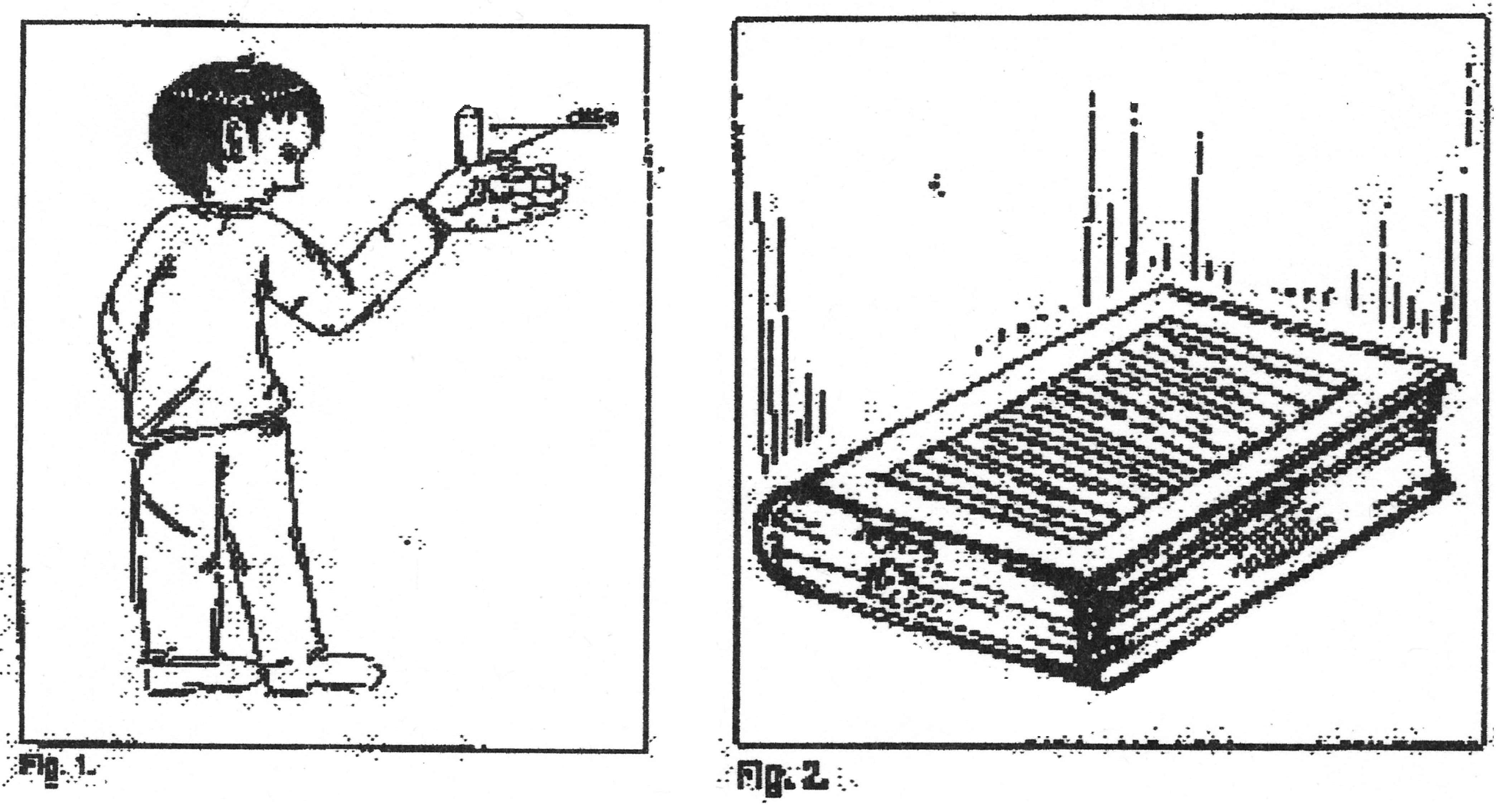January 01, 2000 Filed in:
Demo CornerEd van den Berg and Rosea van den Berg, University of San Carlos, Talamban Campus, Cebu City, Philippines
edberg@durian.usc.edu.ph
This article was excerpted (with the authors’s permission) from a longer article in The Physics Teacher
(Sept. 1998, p.356-8).
What can we do to have clear and exciting lessons without a great amount of demonstration apparatus and hours of preparation each day? We present here a collection of small and quick demos that require no equipment beyond what is present in a classroom (chalk, chairs, students, books, paper, backpacks and their contents). Some are to prove something, but most are to illustrate, visualize, or simulate. These basic and well-tried ideas will stimulate students and revive the instructor who has spent a late night checking student papers. Have fun!
 Free fall and independence of mass
Free fall and independence of mass
Break a piece of chalk into two pieces, one longer than the other. Hold them between thumb and index finger, with the lower ends at the same level (Fig. 1). Ask students to predict which one will hit the floor first if chalks are released simultaneously. Discuss predictions and reasons. Then let go; repeat until all observers agree. Explain.
Fall and air drag
Let a piece of paper drop. It falls slowly. Then crumple it; it drops faster. Take a small piece of paper and put it on top of a book and drop the book (Fig. 2). The paper will reach the floor simultaneously with the book! (No need for the awkward vacuum tube with feather and lead ball.)
Kinematics
Walk across the front of the room (a) at constant speed, (b) accelerated and decelerated, © stopping and going. Let students draw position-vs-time and velocity-vs-time graphs. Of course you should have brought a motion sensor, but the walking will do just as well. Make sure to walk by the students to see their graphs, discover conceptual errors, and react.
Projectile motion, relative motion
Walk with constant velocity while throwing a piece of chalk straight up. It lands in your hand, not behind you. So the chalk had the same horizontal velocity as you did!
Torque
Illustrate torque using a door. With torque we make things turn around an axis. Push the door at the free end with your finger and it moves easily, but the finger has to move a great distance to move the door 90°. Now push the door closer to the axis. The force to be exerted is much greater, but the finger has only to move a short distance to move the door 90°.
Reflection
It’s easy to imagine many demonstrations using reflecting objects such as windows, metals, and so on. A spectacular one is to suggest to our class that your whole body will be visible in any mirror as long as you increase your distance from the mirror. Then you
disprove the idea by using a mirror that one of the students can surely provide. Beware of convex and concave mirrors here!
Parallax
Have students close their right eye and hold up a pen at arm’s length such that it is in line with a mark on the blackboard. Have students then close the left eye and open the right one. The pen is no longer in line with the mark on the board.
Acknowledgement: Illustrations for this paper were done by Renante C. Embalzado, who is studying to become a physics teacher.
Column Editor: Ernie McFarland, Physics Department, University of Guelph, Guelph, Ontario, N1G 2W1 Tags: Kinematics, Motion, Optics


